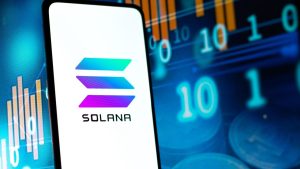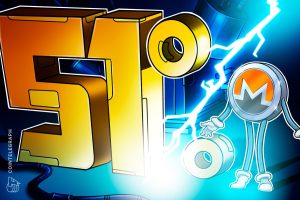How to pick or analyze altcoins?

What are altcoins?
The word “altcoin” is derived from “alternative” and “coin.” Altcoins refer to all alternatives to Bitcoin. Altcoins are cryptocurrencies that share characteristics with Bitcoin (BTC). For example, Bitcoin and altcoins have a similar basic framework. Altcoins also function like peer-to-peer (P2P) systems and share code, much like Bitcoin.
Of course, there are also marked differences between Bitcoin and altcoins. One such difference is the consensus mechanism used by these altcoins to validate transactions or produce blocks. While Bitcoin uses the proof-of-work (PoW) consensus mechanism, altcoins typically use proof-of-stake (PoS). There are different altcoin categories, and they can best be defined by their consensus mechanisms and unique functionalities.
Here are the most common types of altcoins:
Mining-based
Mining-based altcoins use the proof-of-work method, most commonly known as PoW, which allows systems to generate new coins by way of mining. Mining entails solving complex problems to create blocks. Monero (XMR), Litecoin (LTC) and ZCash (ZEC) are all examples of mining-based altcoins.
Stablecoins
Stablecoins aim to reduce the volatility that has marked crypto trading and use since the beginning. The value of stablecoins is, therefore, pegged to the value of a basket of goods, like precious metals, fiat currencies or other cryptocurrencies. The basket serves as a reserve in case the cryptocurrency encounters problems. Dai (DAI), USD Coin (USDC) and Tether (USDT) are all examples of stablecoins.
Security tokens
True to its name, a security token is similar to traditional securities traded in stock markets. They resemble traditional stocks and represent equity, either in the form of ownership or dividends. Security tokens attract investors because of the high probability that their price will appreciate quickly.
Memecoins
Memecoins are called such because they represent a silly take on well-known cryptocurrencies. They are typically hyped by celebrities and popular influencers in the crypto space. Popular meme coins Dogecoin (DOGE) and Shiba Inu (SHIB), for example, often have their prices driven up by Elon Musk, Tesla’s CEO and well-known crypto enthusiast.
Utility tokens
Utility tokens are used to provide services like rewards, network fees and purchases within a given network. Utility tokens do not offer equity, unlike security tokens. Filecoin (FIL), for example, is a utility token used to purchase storage on a decentralized storage network.
How do you evaluate altcoins?
Altcoin fundamental analysis involves looking at and evaluating all available information on an altcoin. It involves looking at the cryptocurrency’s use cases and its network, as well as the team behind the project, to fully understand and evaluate the best altcoins to buy.
When analyzing altcoins, or any cryptocurrency for that matter, the goal is to understand whether the asset in question is overvalued or undervalued. Overvalued assets should be avoided, whereas undervalued assets are more ideal. This is because overvalued assets will likely underperform and dip back to their real value. Undervalued assets, on the other hand, have more potential for growth and are consistently profitable.
A thorough analysis will help you make the best decision concerning your investment decisions.
Here are some helpful guidelines on how to analyze cryptocurrency before investing:
Step 1: Analyze the whitepaper and find the value proposition
Scrutinizing a token’s whitepaper will provide a lot of relevant information such as its use cases, goals and the team’s vision for the project. The white paper must give you a good picture of how the altcoin will provide value for its users.
The value proposition for Bitcoin, for example, is as follows: “a decentralized digital currency, without a central bank or single administrator, that can be sent from user to user on a peer-to-peer network without the need for intermediaries.”
An altcoin’s value proposition can guide you as you continue to analyze other information about it.
Step 2: Look for increasing demand and stable (or decreasing) supply
Looking at supply and demand is one of the best ways to assess your next crypto investment. Now that you’ve gotten a clear picture of how the altcoin adds value to its users, it’s time to look at how it navigates supply and demand.
Simply put, the altcoin should have incentives that will facilitate the increase of demand in such a way that supply is continually decreasing or stable. When demand outpaces supply, prices go up, thereby fueling even more demand.

To do this, you can access resources like Cointelegraph’s Price Indexes and Market News, as well as Coin 360’s Heatmap and CoinMarketCap.
Step 3: Assess the team and stakeholders behind the project
Now that you have a good understanding of what the project can offer, it’s also important to thoroughly assess the team behind the project. You can find information about the team on the project’s white paper, but try to do independent research on them as well. You can check out the official project site’s team page as well as their LinkedIn profiles which they should have made public and accessible to all.
Ask the following questions when looking into each member’s background:
Have they worked on other reputable and successful projects in the past?What are their credentials?Are they reputable members of the crypto community and blockchain ecosystem?
The goal is to find if the team behind the project is experienced and composed of experts who know what they are doing. You can look at on-chain analytics platforms and blockchain explorers to supplement your research regarding this. You can also sniff around their social media profiles or check out Twitter for conversations they engage in.
Ethereum, for instance, has such a strong investment community because every individual working on Ethereum creates value for Ethereum holders. Despite issues such as high fees and slow transactions, developers, community builders and other top talents still want to go onboard with Ethereum-related projects.

Platforms like AAVE and OpenSea, for example, are built on Ethereum. The logic behind ensuring a strong core team backing the project is because it creates a ripple effect. A project with a strong talented team attracts even more credible forward-thinkers, thereby allowing even more projects and improvements to be built upon the platform, much like Ethereum. These people strive to continually improve on available platforms and initiatives related to the project, thus creating even more value for currency holders.
Which altcoin platforms have the most potential?
When it comes to altcoin investing, there are a variety of options you can choose from. However, it’s always prudent to know which ones have the most potential to ensure you will be making a smart investment.
Ethereum: There’s a reason why Ethereum is dubbed by many as the “King of Altcoins.” Created in 2013 by Vitalik Buterin and co-founders, Ethereum is a smart contract platform used to create decentralized applications (DApps). The founders engineered Solidity, Ethereum’s very own programming language for smart contracts. The majority of the current decentralized finance space relies on Ethereum’s blockchain, while the native token Ether (ETH) continues to evolve in its usefulness by the day.Chainlink: Chainlink takes smart contracts to another level by incorporating real-world data. Thanks to Chainlink, Ethereum smart contracts can now make calls to other application programming interfaces, as well as act on global occurrences and other asset prices. Chainlink’s value continues to soar while it brings onboard valuable stakeholders, including former Google CEO Eric Schmidt as one of its advisers.

Stellar Lumens: Stellar aims to unite global banking systems via its decentralized platform. As such, it uses disconnected payment methods like Alchemy Pay and Single Euro Payments Area. The Stellar network then connects such systems via a decentralized ledger. In competition with Stellar is Ripple, whose run-in with SEC has made it vulnerable. This places Stellar in a prime position to take the reins at becoming the top global payment network.Aave: Aave is already one of the top lending protocols today and continues to offer security and anonymity to borrowers. Because of its popularity, borrowers are required to offer greater collateral than the amount they are borrowing. The collateral is safely held in escrow throughout the duration of the loan. In the event of a default, the lender is automatically paid via the smart contract.












